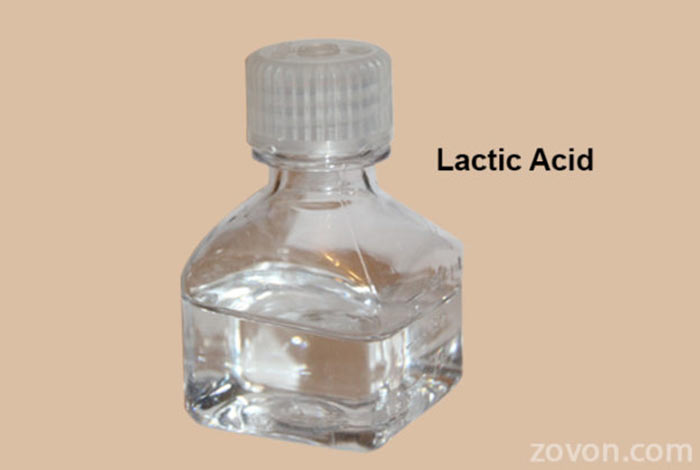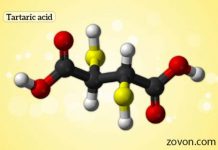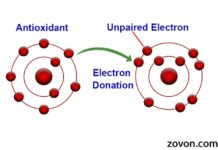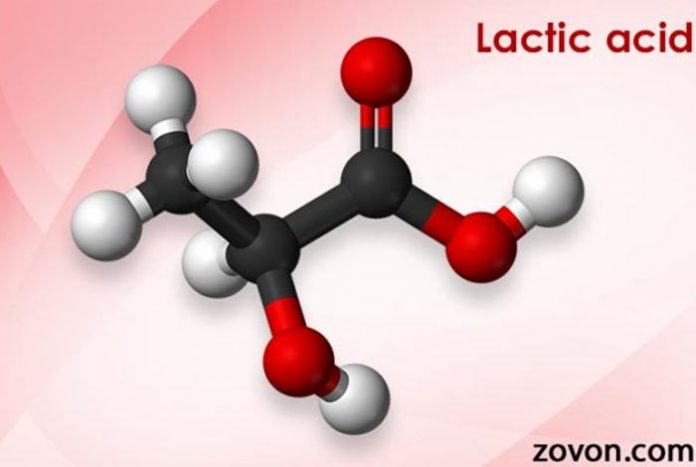
Lactic acid is one of most easily available AHAs. It is mostly found in dairy products like sour milk and cheeses and so is called milk acid. This organic compound is also produced in our body by our muscles, especially during a rigorous workout. This acid helps in the production of energy by the alternate method when the concentration of oxygen gets very low in muscle cells.
How is it Produced?
Our body requires a comparatively higher amount of oxygen during those intense workout sessions. When muscles break the carbohydrates anaerobically in order to produce energy, another product is formed and that compound is known as Pyruvate. This compound may be broken down further to produce more energy in the adequate availability of oxygen. But when the oxygen is not sufficient enough to carry out the same reaction, this pyruvate gets converted into lactic acid.
Formula for Lactic Acid:
Lactic acid is a carboxylic acid. Its formula can be written in three ways:
- C3H6O3
- CH3 CHOHCOOH
- HC3H5O3
Lactic acid has a syrup-like consistency (50% liquid). It is odorless and colorless to yellow. It is in a liquid form 16.8 C (62.2 F) and below this temperature, it forms crystals. It is produced naturally as well as artificially.
Two-dimensional structure of Lactic acid
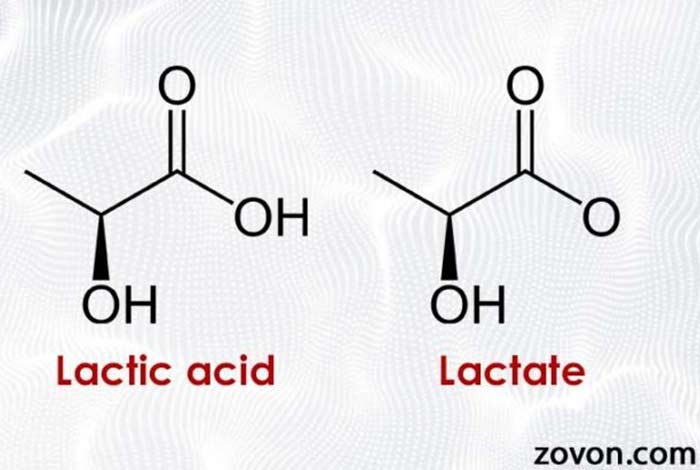
Composition Of Lactic Acid:
Lactic acid is composed of hydroxyl group adjoining to a carboxylic group just like all other alpha hydroxy acid (AHA).
During power exercises like running and sprinting, the demand for energy is high. Glucose breaks down and it forms pyruvate. In this procedure, lactate is produced from the pyruvate so faster that tissues cannot remove it.
Sources/Uses Of Lactic Acid:
Lactic acid in food:
Lactic acid is found in many foods. It is formed by natural fermentation in products like soy sauce, yogurt, cheese, meat products, etc. Lactic acid is also used widely in food applications. It is used as a pH regulator, preservative and flavoring agent as well.
Meat:
Lactic acid in the form of potassium lactate is used to increase the shelf life of meat and poultry products and keep these fresher for a considerable period of time.

Beverages:
It has a mild taste so it is used as an acidity controller in soft drinks and juices.
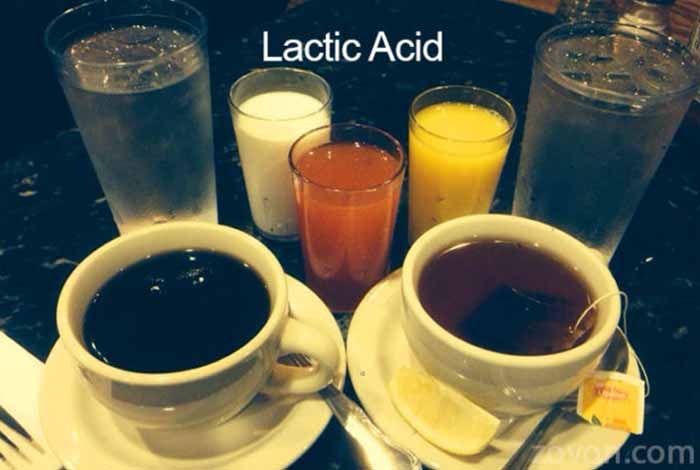
Pickles:
It is used in the prevention of pickled vegetables such as olives, pearl onions and other vegetable preserved in brine.

Dairy:
It has an antimicrobial action that preserves dairy products. It is an excellent acidification agent.

Salads:
It keeps microbial stability in salads which results in maintaining its milder flavor in products.

Confectionery:
Lactic acid results in the mild taste in confectionery products like candies, fruit gums and other products. It improves quality, reduces stickiness and gives confectionery products a longer shelf life.
Other than above-mentioned products, lactic acid is also used in:
- Personal and healthcare products
- Cleaning products
- Food preservatives
- Paint and coating additives
- Electrical products
- Laundry products
- Dairy foods, such as yogurt
- Dishwashing products
- Furniture care products
Lactic Acid Used in Other Products
Pharmaceuticals:
Lactic acid is used in pharmaceutical industry as a pH regulator, an intermediate chiral molecule and as a metal detachment agent.
Biomaterials:
Lactic acid is an important component in biomaterials such as reassembled screws, sutures and medical devices.
Detergents:
Lactic acid is known for its disabling properties and is applied in household cleaning products. Also, it is used as a natural anti-bacterial agent in decontaminant products.
Technical:
Lactic acid is used in a wide variety of industrial processes where acidity is required such as manufacturing of leather and textile products, computer disks, car coating, etc.
Animal Feed:
Lactic acid is a mainly used as a preservative in animal nutrition. It has health improving properties, thus increases the performance of farm animals. It is also used in their food and water.
Biodegradable Plastics:
Lactic Acid is the foremost building block for Polylactic Acid. PLA is a bio-based and biodegradable polymer that is used for producing renewable and combustible plastics.
Skin And Lactic Acid:
Lactic acid belongs to the acids family that is alpha hydroxy acids (AHAs). It is produced naturally within the body and also found in dairy products. This acid is artificially produced for skin care as well. It is used an exfoliant, a moisturizer and in skin peel treatments. As it has the moisturizing effect, it prevents water loss from the skin. It also helps in the production of oil and fats in the skin to give it a youthful look. Lactic acid works as an excellent exfoliating agent by breaking down bonds between cells.
Benefits Of Lactic Acid:
- It gently cleans the skin and works as an exfoliant for radiant skin.
- It hydrates and prevents the skin from water loss.
- It has anti-bacterial quality so prevent the skin from acne.
- It controls pigmentation like red and brown spots on the skin.
- It has an anti-aging effect.
- It promotes skin renewal.
- It reduces fine lines.
- It improves texture and tone and brightens the skin.
- It prevents the skin from oiliness and breakouts.
Application Of Lactic Acid:
As a cleanser:
Lactic acid as a cleanser leaves an excellent result on your skin. It gives deep cleansing and exfoliation to the skin.
As a Lotion or Cream:
If you have a very dull and dry skin, cream or lotion is a better option. It gives texture to the skin and removes roughness.
As a Peel:
Peeling treatment with the product containing lactic acid once in a week or two can give great results for skin treatments.
It can also be used in the combination with other compounds such as Vitamin A, B and C as they are a great family together.
Side Effects Of Lactic Acid:
Some of the side effects people may face after applying lactic acid are:
- Burning
- Itching
- Stinging
- Redness
- Skin irritation
- Blistering
- Skin discoloration
Some of the side effects which can be seen in people who take lactic acid as a supplement are:
- Allergic reactions
- Swelling
- Itching on face, tongue or throat
- Severe dizziness
- Trouble breathing
Precautions:
Before using these products, consult a doctor if you are allergic to these kinds of acids or have sensitive skin. These products may contain inactive acids also which may leave an allergic effect on the skin.
FAQs: What people normally want to know about Lactic Acid?
1. Can we intake lactic acid during pregnancy?
Yes, we can take medicines containing lactic acid if it is highly required and after the recommendation by your doctor.
2. Is there any specific time in a day our body makes lactic acid?
No, the human body makes lactic acid all the time.
3. I am a vegetarian. How can I get lactic acid naturally?
There are fruits, vegetables and other products which have lactic acid naturally such as yogurt, dough bread, bakery products, beverages, pickled vegetables. You will find lactic acid in above-mentioned products in considerable quantities.
4. Are there Lactic acid supplements available in the market?
Yes, there are supplements containing lactic acid available in the market. Some are Probiotics, Alkalife tablets, Extreme endurance. However, it is highly recommended to ask the pharmacist before taking them. It can have adverse effects on the body as well.

